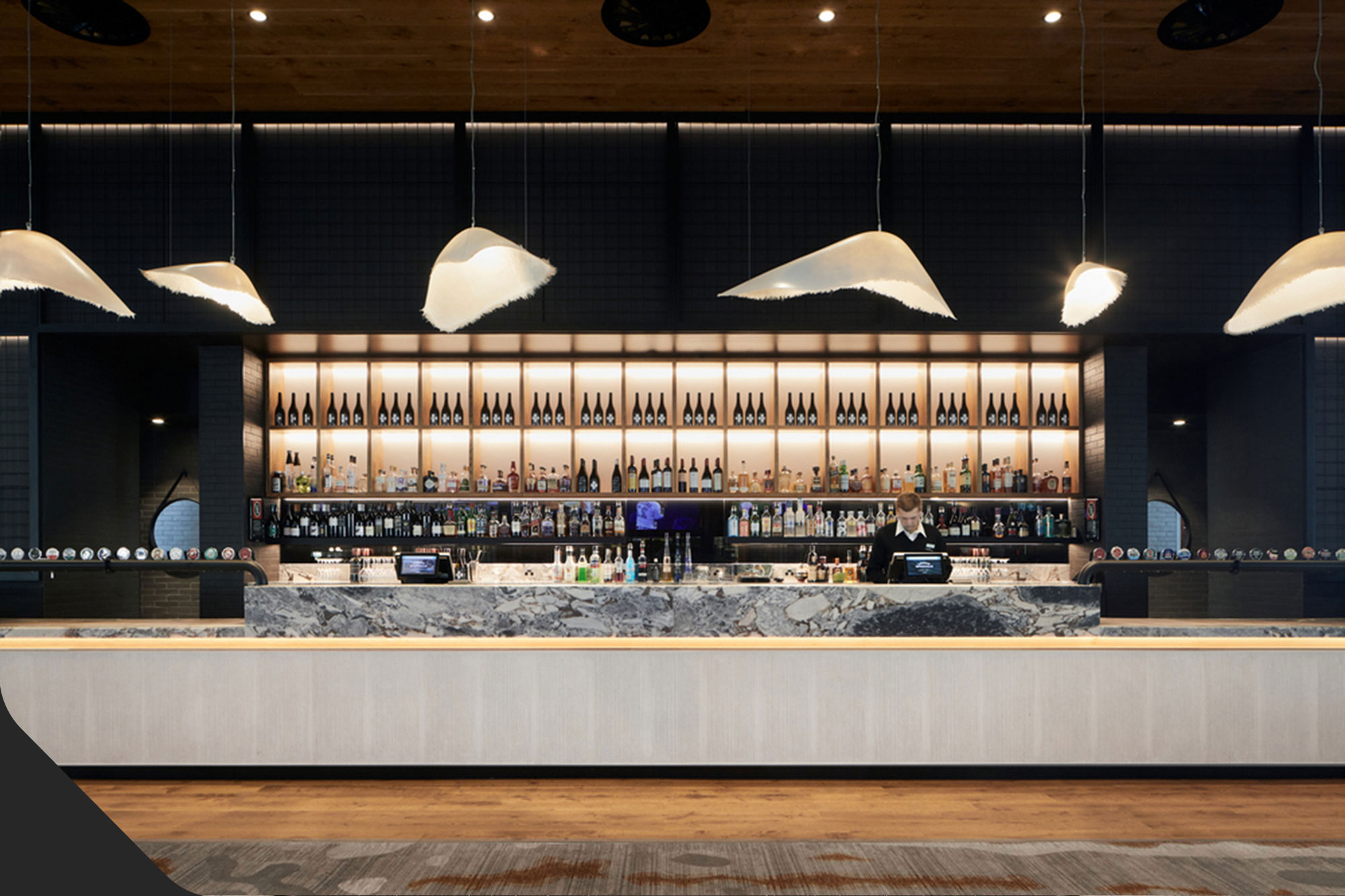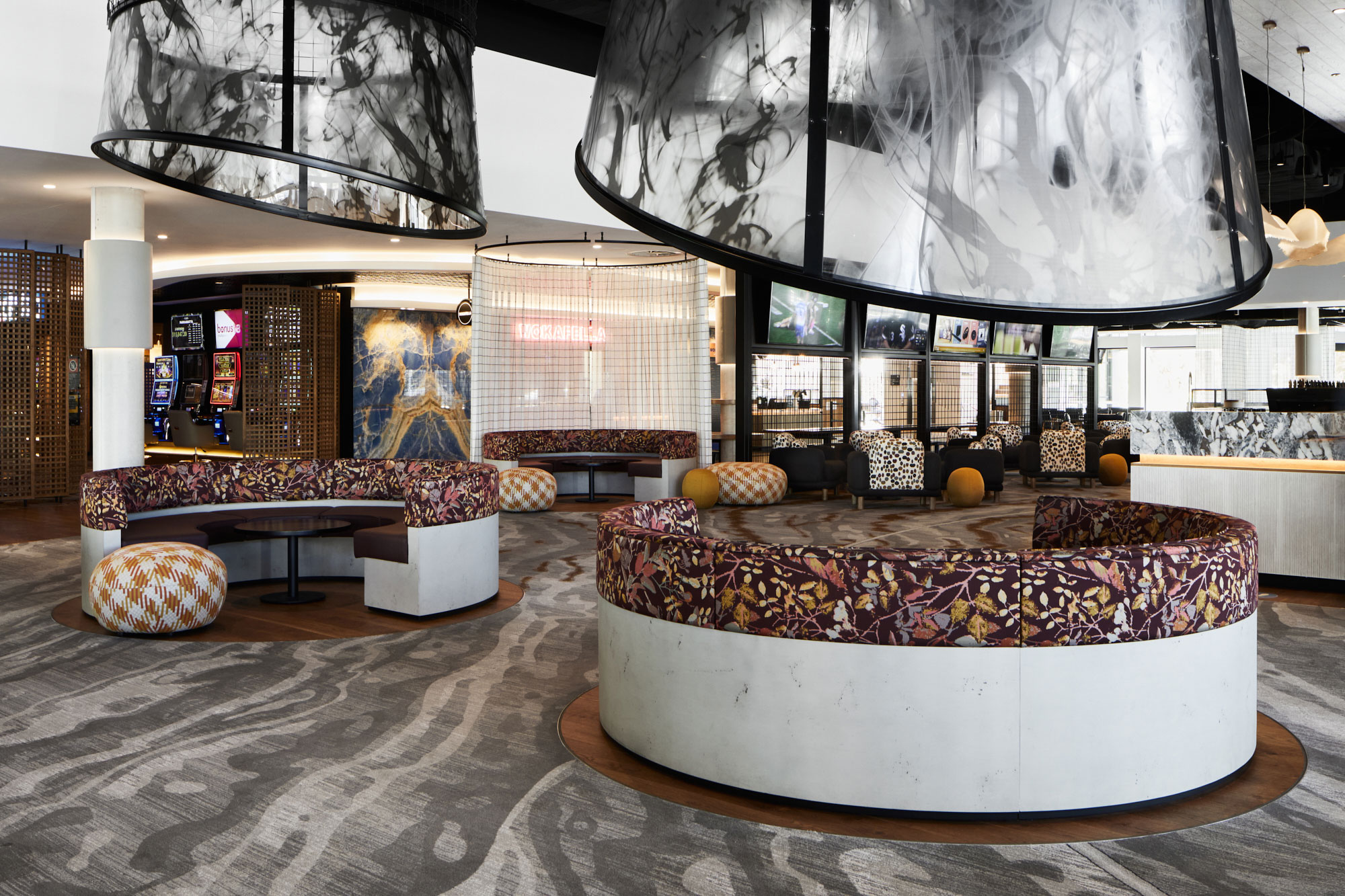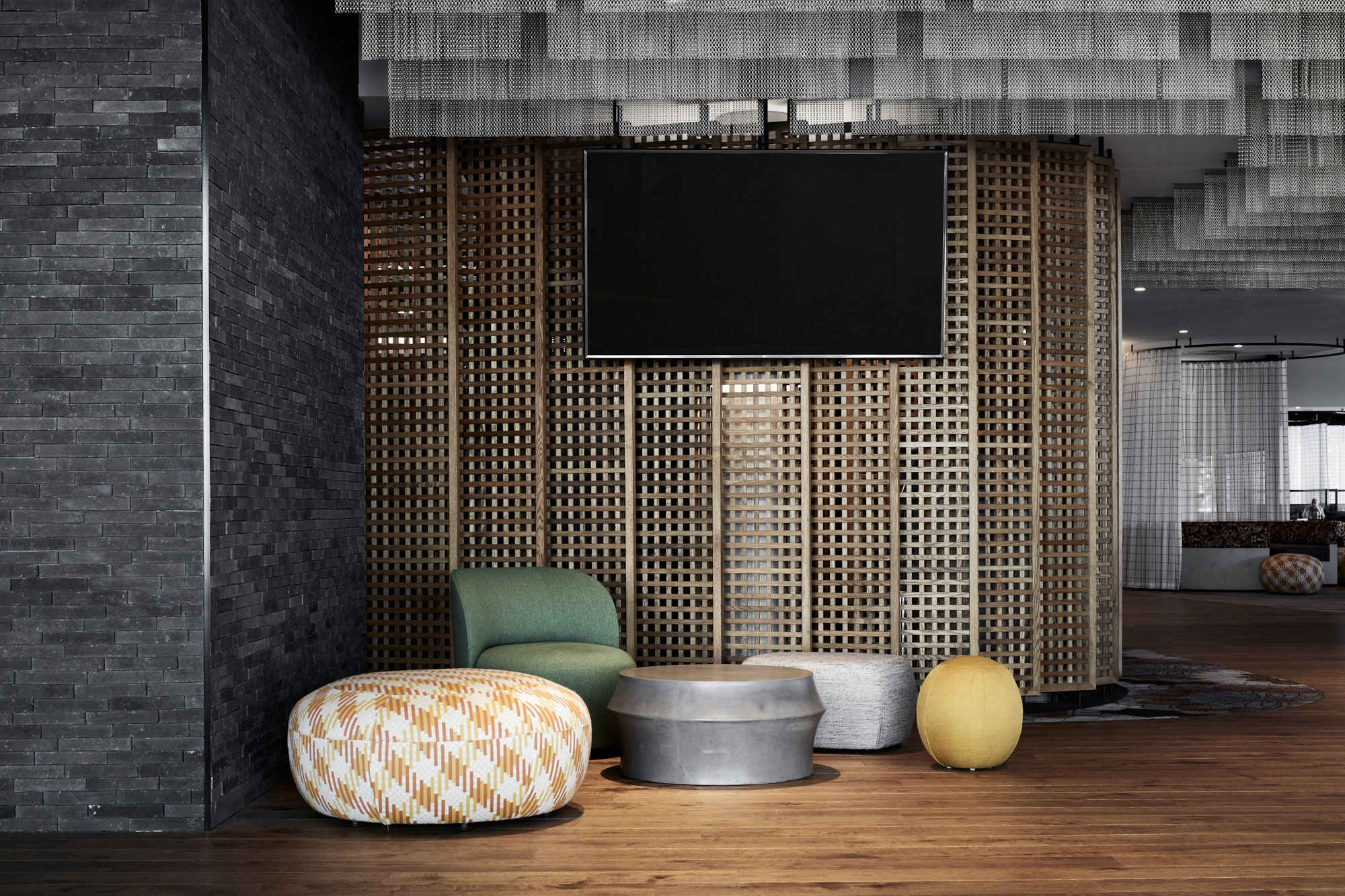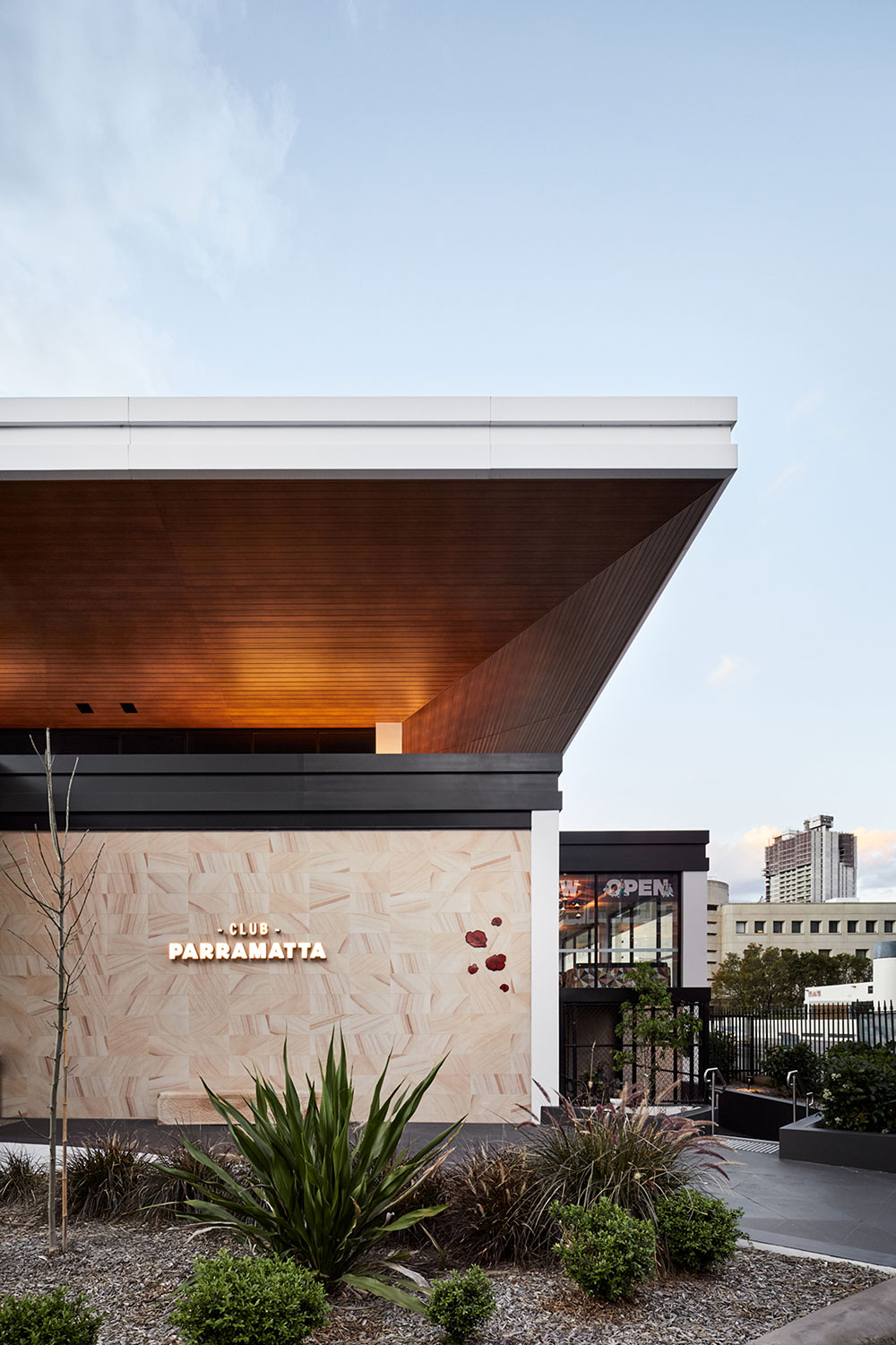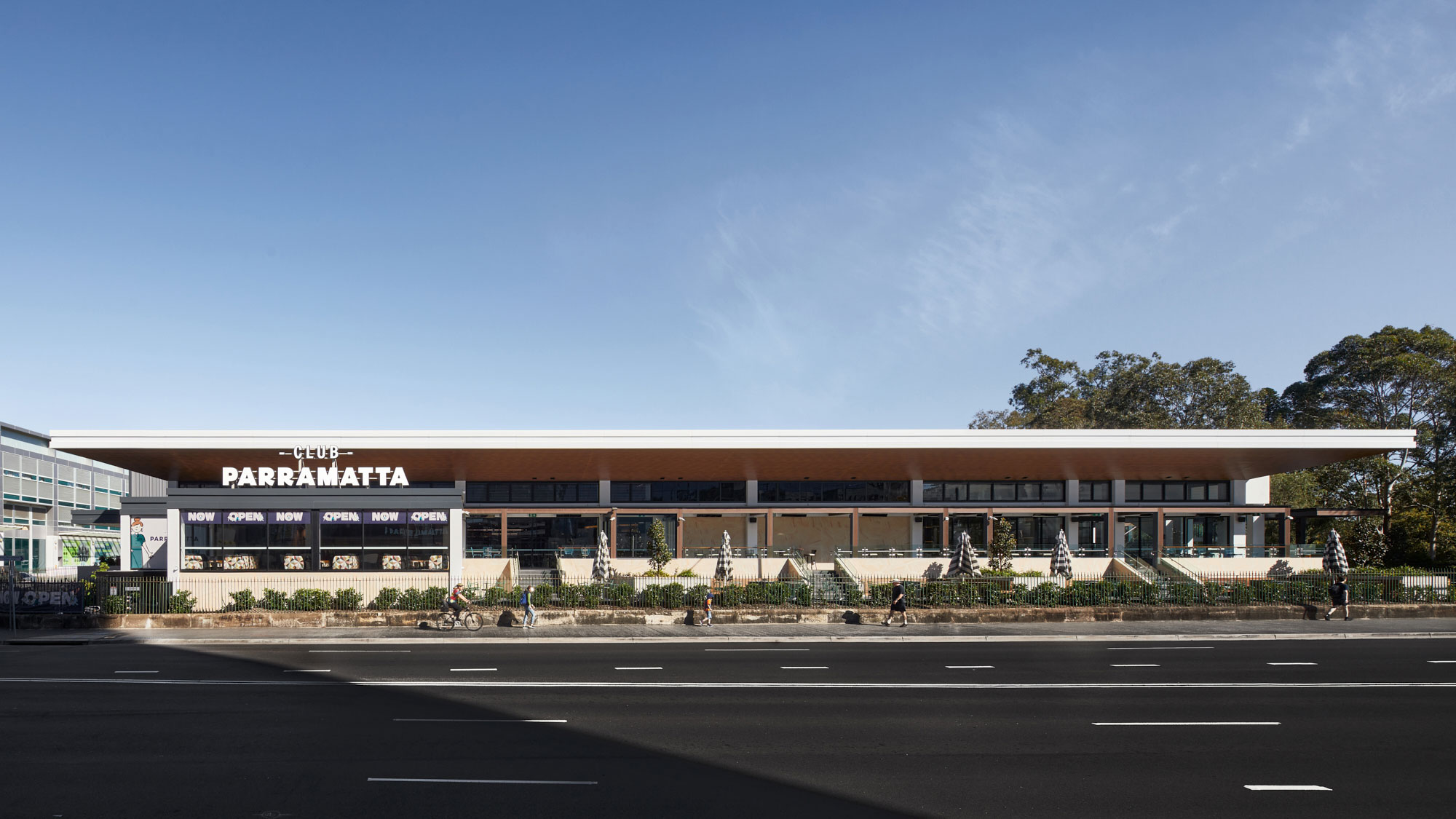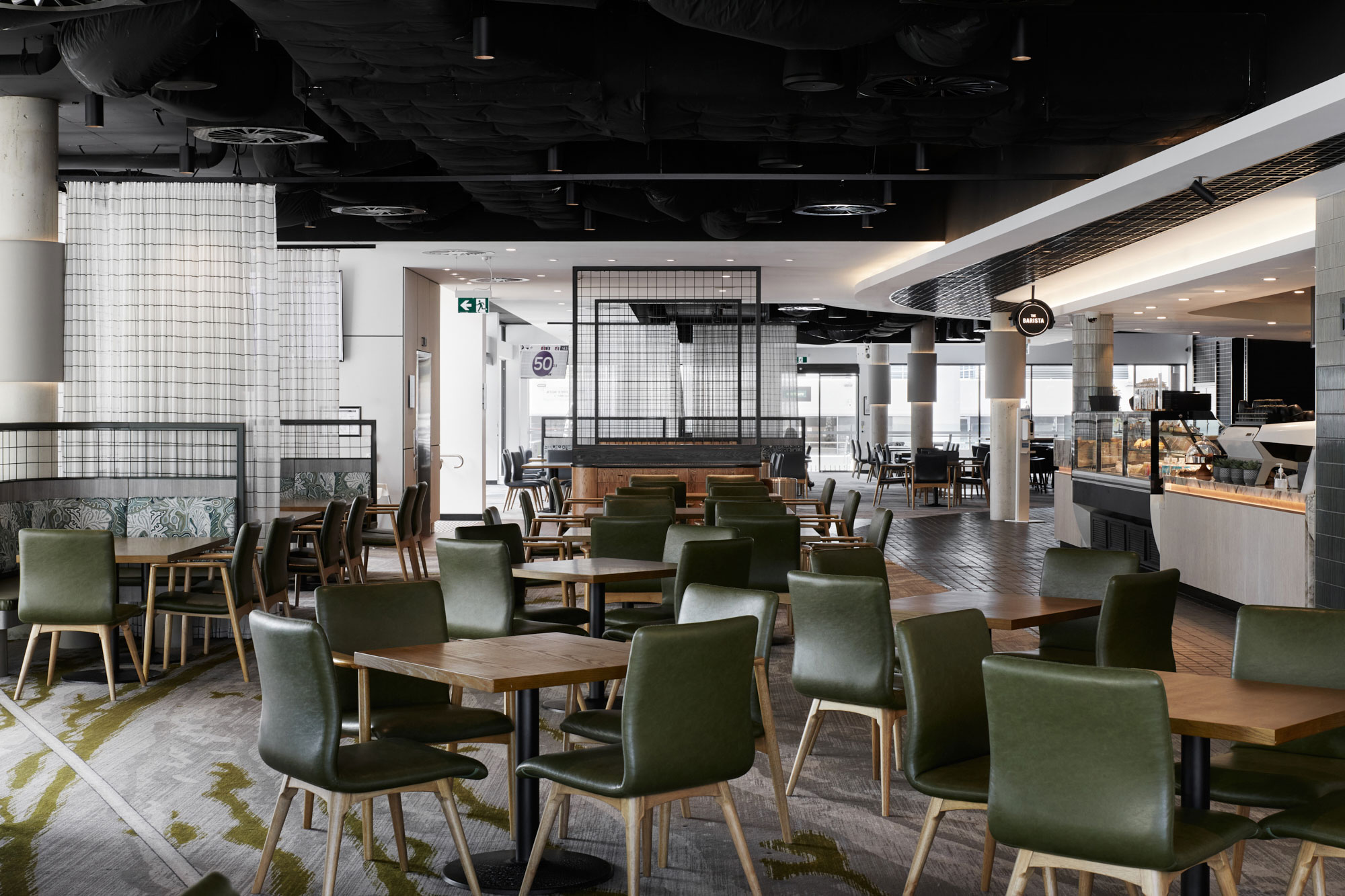In the heart of Sydney’s second CBD, Club Parramatta represents a remarkable achievement that respects and enhances the unique qualities of its surroundings and its community. Our design approach embraces the site’s environmental, cultural, and historical significance, resulting in a structure that seamlessly integrates with its context.
Our strategic use of materials, spatial organisation, and cultural references creates a cohesive and engaging experience that celebrates the community’s diversity and fosters a connection to the past, present, and future.
We were challenged with creating an internal landscape within the club, demonstrating a deep understanding of the site’s topography, spirit, and connection to the land and waters. By incorporating elements such as monolithic Australian granites, a rich palette of colours and timbers, and a design that embeds the building into the surrounding greenery, the architecture becomes rooted in the natural environment.
Our inclusion of Feng Shui principles throughout the interior design allowed us to showcase a considerate approach to incorporating cultural values and preferences, acknowledging, and supporting the cultural diversity of the club patrons. By integrating the five elements—fire, wind, water, earth, and metal—the design brings warmth, energy, stability, precision, and tranquillity creating a cultural identity within the design communicating a message of cultural recognition to the club’s patrons and furthermore to the community.
The timber walkway traverses through the building, connecting to underground water courses, demonstrating a seamless integration of the built environment with the natural surroundings. This integration creates a sense of continuity, bridging the gap between the adjacent park and the urban fabric of the city. The floating “campfire” pods, positioned over circular banquettes, provide a visual and functional distinction between the energetic sports lounge area and the more relaxed main bar, enhancing the overall experience and ambiance of the venue.
Additionally, the incorporation of indigenous art, custom prints, and colours inspired by the Australian landscape establishes a strong sense of place and recognition. These elements not only celebrate the cultural heritage but also create a visual narrative that connects past and present, fostering a sense of belonging for all visitors.
